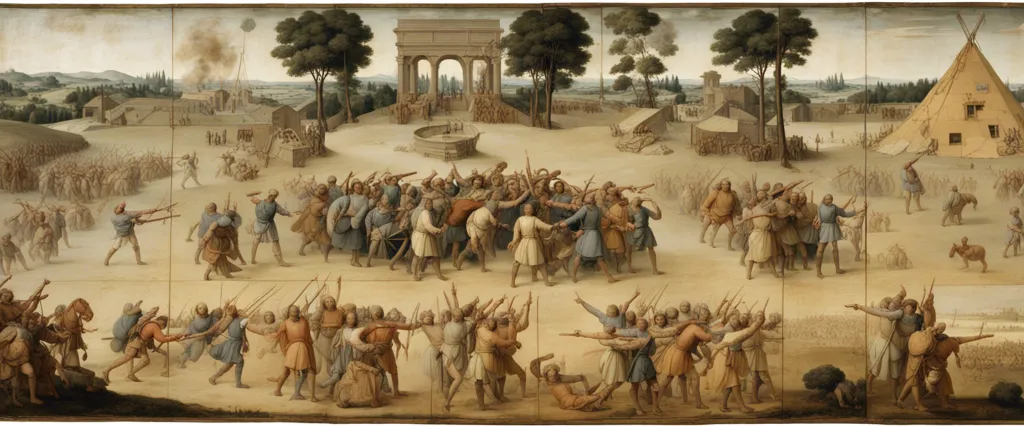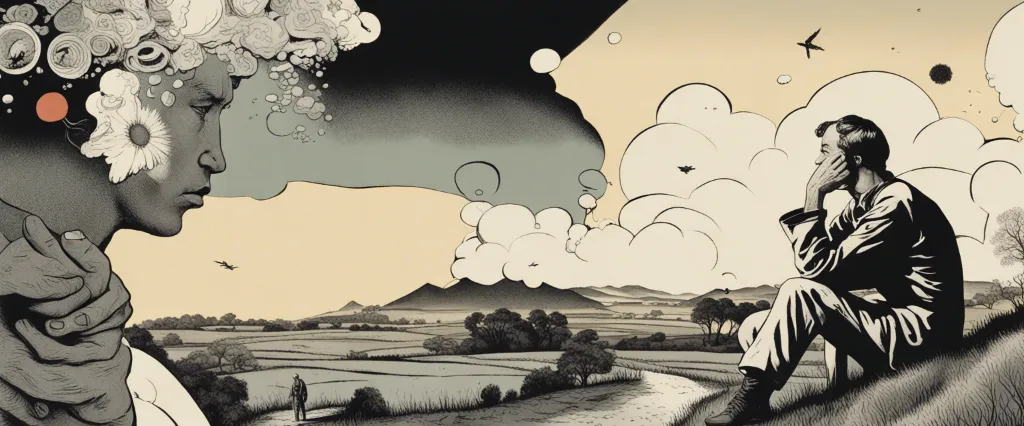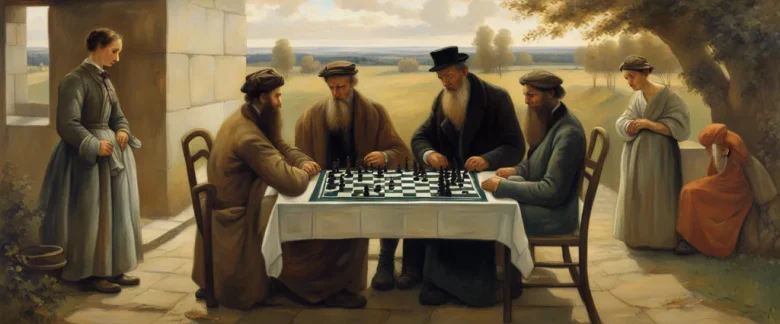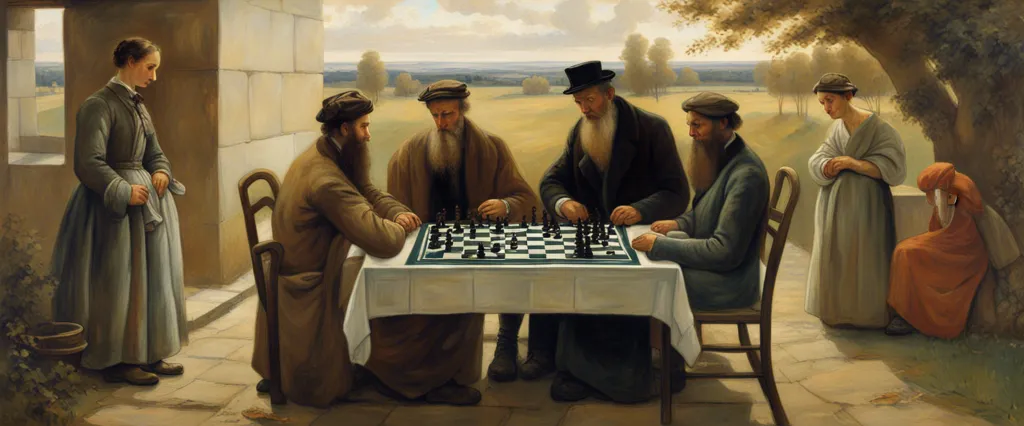War and Peace, penned by Leo Tolstoy, is an extraordinary literary masterpiece that unravels the gripping tales of Russian nobility amidst the tumultuous backdrop of the Napoleonic invasion. Published in 1869, Tolstoy’s opus spans three volumes, encompassing a vast array of characters, from aristocrats to soldiers, as they navigate their way through love, war, and the eternal struggle for purpose and meaning in life. With his mastery, Tolstoy delves deep into the human psyche, giving readers a profound insight into the complexities of human existence. Regarded as one of the greatest novels in world literature, War and Peace remains an enduring testament to Tolstoy’s unrivaled ability to capture the human spirit in all its triumphs and tribulations.
Introduction and Background
War and Peace is a literary masterpiece by renowned Russian author Leo Tolstoy. Published in 1869, it is a sprawling epic that focuses on the lives of several Russian aristocratic families during the early 19th century, particularly during the time of Napoleon’s invasion of Russia.
The novel begins by introducing the main characters, their backgrounds, and their connections to one another. It features an extensive cast, including Pierre Bezukhov, the illegitimate son of a wealthy count, and Prince Andrei Bolkonsky, whose wife dies shortly after childbirth. The story also follows the charming and vivacious Natasha Rostova, as well as her brother Nikolai and their family. Through these characters, Tolstoy explores themes of love, ambition, duty, and the impact of historical events on individual lives.
Amidst the personal dramas, War and Peace depicts Napoleon’s invasion of Russia in 1812. Tolstoy delves into the consequences of war, examining its effects on both individuals and society as a whole. Through vivid and detailed descriptions, he transports readers to the battlefields, depicting the horrors of war, the strategies employed by military leaders, and the devastation wrought upon the Russian countryside.
The novel has a non-linear structure, seamlessly moving between private stories and historical events. Tolstoy’s writing captures the complexities of human experience, delving into the psychological and emotional depths of his characters. His narrative not only explores the personal lives and relationships of the protagonists but also examines broader philosophical questions about life, morality, and the nature of existence.
Overall, War and Peace serves as both a historical account of Russia’s struggle against Napoleon and a profound exploration of human nature. It reflects Tolstoy’s own beliefs about the importance of individual agency, and his philosophical inquiries into love, death, suffering, and the pursuit of meaning.
War and Society
Leo Tolstoy’s masterpiece, War and Peace, is an epic novel that intricately weaves together the lives of dozens of characters against the backdrop of the Napoleonic Wars. Although the novel is voluminous and offers a multitude of themes, it primarily explores the impact of war on society.
The story unfolds in Russia in the early 19th century, covering a period of over 15 years. It follows the lives of several Russian aristocrats, including the principled and philosophical Prince Andrei Bolkonsky, his passionate and idealistic sister Princess Maria, the reckless but good-hearted Count Pierre Bezukhov, and the beautiful and audacious Natasha Rostova.
Tolstoy paints a vivid picture of the immense societal changes brought on by the war. He delves into the psychological and emotional effects of warfare on individuals and how it molds their characters. The book explores the contrasting experiences of the characters – some reveling in the pursuit of glory, while others grapple with the brutality and futility of war.
Moreover, War and Peace delves into the interconnected nature of society during times of conflict. Tolstoy masterfully depicts the impact of the war on various strata of society, from the noble classes to the common people. He highlights how the chaos and destruction of war dissolve the rigid social barriers and unite people under a shared sense of vulnerability.
Throughout the novel, Tolstoy presents a critique of war as a senseless and destructive force. He challenges the prevailing narratives glorifying war and emphasizes the importance of individual actions over grand historical events. Tolstoy’s philosophical musings on the nature of history and the role of military leaders complement the intricate character development, making War and Peace an enduring literary masterpiece.
Love and Relationships
In the epic novel “War and Peace” by Leo Tolstoy, love and relationships serve as integral themes that explore the complexity of human emotions and societal expectations. Set against the backdrop of Napoleonic wars, the story follows various characters as they navigate their romantic entanglements and personal growth.
The diverse relationships in the novel highlight the different dynamics and challenges faced by individuals. Natasha Rostova, a young and vibrant protagonist, experiences a transformation from childhood to womanhood through her various romantic relationships. Initially infatuated with the gallant Prince Anatole, Natasha later falls in love with Pierre Bezukhov, a kind-hearted and introspective man. Their love story, while imperfect and tumultuous, symbolizes the search for true meaning and connection in a chaotic world.
Another central character, Prince Andrei Bolkonsky, exemplifies the emotional journey of a disillusioned man yearning for love. Initially cold and reserved, Andrei undergoes a profound change when he falls for Natasha – a passionate affair that brings him enlightenment and happiness. However, tragedy strikes, and this love is cut short, leading Andrei to introspection and ultimately finding love in a different form later in life.
Throughout the narrative, Tolstoy delves into the complexities of relationships, emphasizing the intricate interplay of societal norms and personal desires. The novel explores marriages built on societal expectations rather than love, contrasting against relationships fueled by genuine affection and personal connection.
Ultimately, “War and Peace” presents love as a transformative, dynamic force that shapes and defines our existence. Tolstoy presents a nuanced exploration of relationships that goes beyond the conventional expectations of romance, while highlighting the profound impact love can have on individual growth and the search for meaning in an ever-changing world.
Philosophical Reflections

War and Peace, written by Leo Tolstoy, is a monumental work of literature that delves into the intricacies of human existence, exploring themes of war, love, and the pursuit of meaning. Throughout the novel, Tolstoy presents various philosophical reflections that offer profound insights into the nature of life and the human experience.
One important philosophical reflection in War and Peace revolves around the concept of free will versus determinism. Tolstoy questions whether individuals truly possess the power to shape their destinies, or if their actions are predetermined by external factors. He believes that free will is an illusion, arguing that historical events are not solely influenced by the choices of prominent figures, but rather, are shaped by a complex network of socio-political forces.
Tolstoy also delves into the question of the meaning of life. He suggests that individuals often seek purpose and fulfillment through grandiose endeavors such as war or power, but vitality lies in the everyday moments of love, family, and friendship. He emphasizes the importance of embracing the present and finding joy in the simplicity of existence rather than being consumed by abstract ideals.
Another central theme in the novel is the futility and destructiveness of war. Tolstoy discusses how warfare disrupts and destroys lives, highlighting the profound grief and suffering endured by both soldiers and civilians. He questions the glorification of war, arguing that it is a barbaric and futile pursuit, devoid of any noble purpose.
In essence, War and Peace is not only a historical epic but also a philosophical introspection. Tolstoy challenges readers to question the nature of human agency, to seek fulfillment in the ordinary, and to reflect upon the devastating consequences of war. Through his profound reflections, Tolstoy encourages us to contemplate the complexities of life and to strive for a better, more compassionate world.
Family and Domestic Life
War and Peace by Leo Tolstoy provides a sprawling epic that delves into the lives of various families and their domestic circumstances during the early 19th century in Russia. The novel shows how these families navigate their personal lives amidst the tumultuous backdrop of war and social changes.
The principal families featured in the novel are the Rostovs, the Bolkonskys, and the Bezukhovs. The Rostovs, led by the patriarch Count Ilya Rostov, reside in Moscow and experience financial difficulties owing to his extravagant spending habits. The Rostov family dynamics revolve around the relationships between Count Rostov’s wife, his eldest daughter Natasha, and his son Nikolai, who eventually serves in the army.
The Bolkonsky family, headed by the elderly Prince Bolkonsky, lives in a rural estate. His son Prince Andrei Bolkonsky, initially filled with ambition and dreams of glory, falls in love with Natasha Rostov but eventually withdraws from domestic happiness to join the army.
Lastly, the Bezukhovs are represented by Pierre, an illegitimate son who unexpectedly inherits a massive fortune, becoming one of the richest men in Russia. Pierre marries a social butterfly, Helene, but their marriage quickly disintegrates due to her infidelity, ultimately leading to Pierre’s spiritual awakening and search for a meaningful existence.
Throughout the narrative, Tolstoy artfully juxtaposes the internal lives of these families against the external world consumed by war. The domestic sphere, with its love affairs, extravagant lifestyles, and familial tensions, highlights the contrasts between personal desires and the harsh realities of a society disrupted by war and social upheaval.
Overall, the family and domestic life in War and Peace serve as a microcosm of Russian society at the time, illustrating the challenges and complexities faced by individuals as they navigate their personal lives amid broader historical events.
Historical Events and Battles
War and Peace by Leo Tolstoy is a monumental work of literature set during the time of the Napoleonic Wars in the early 19th century. The book spans a period of about fifteen years and tells the story of a group of Russian aristocrats who are caught up in the tumultuous events of the time.
The novel begins in 1805 with the conflict between Napoleon Bonaparte’s French army and the Russian Empire. Tolstoy meticulously describes the historical events leading up to the famous Battle of Austerlitz. The battle is portrayed vividly, with the Russian forces suffering a defeat against the tactical genius of Napoleon.
Following this defeat, the Russian army regroups and eventually engages in the Battle of Borodino in 1812. Tolstoy again provides a detailed account of this historic battle, regarded as one of the bloodiest in European history up to that point. The battle between the Russian and French forces is grueling and devastating, with heavy casualties on both sides. The Moscow fire and French retreat highlight the collapse of Napoleon’s Russian campaign.
Amidst these battles, Tolstoy presents a parallel narrative following the lives and relationships of several prominent characters. The central characters struggle with their personal lives and their roles in the larger war. Their experiences reflect the impact of the historical events on a personal and emotional level.
War and Peace offers a nuanced exploration of the human condition amidst the backdrop of major historical events. Tolstoy’s depiction of the characters and their experiences, intertwined with the battles and political maneuvers, creates a multifaceted narrative that encapsulates the grand sweep of history and its impact on individuals.
Themes of Fate and Determinism
War and Peace, written by Leo Tolstoy, is a masterpiece that explores various themes, including fate and determinism. Throughout the novel, Tolstoy presents a multi-dimensional perspective on these concepts, emphasizing the interplay between human actions and the forces of destiny.
One of the main ideas Tolstoy espouses is that individuals have limited control over their fate. He portrays characters who strive to shape their own destinies through deliberate choices, yet they often find themselves entangled in a web of events beyond their control. This is evident in the experiences of the novel’s protagonists, such as Pierre, Andrei, and Natasha. Despite their determination to control their paths, they ultimately succumb to the larger forces of history and society.
Tolstoy also challenges the notion of individual agency by suggesting that larger historical forces, rather than personal actions, shape the course of events. He highlights the influence of societal and political structures, demonstrating how they manipulate and determine the outcomes of individual lives. This is illustrated through the Napoleonic Wars and the impact it has on the characters, underscoring the insignificance of individual choices in the face of the grand scope of history.
Additionally, Tolstoy presents the idea that destiny is not governed solely by human agency and intention, but also by chance and serendipity. Coincidences and unexpected encounters play a significant role in the characters’ lives, highlighting the unpredictability of fate. These chance occurrences disrupt their plans and highlight the limitations of human control.
Ultimately, Tolstoy suggests that fate and determinism are inseparable aspects of human existence. While individuals strive to assert their agency and shape their destinies, they are ultimately subject to the larger forces of history, society, and chance. This nuanced exploration of fate and determinism adds depth to the narrative of War and Peace and prompts reflection on the complex relationship between human actions and the forces that govern our lives.

Conclusion and Epilogue
The conclusion of the epic novel War and Peace by Leo Tolstoy is marked by a series of significant events and a deep exploration of the themes portrayed throughout the book. As the war draws to a close, we witness the Battle of Borodino, a pivotal moment in Russia’s struggle against Napoleon’s army. Tolstoy depicts the devastating effects of war through the eyes of the characters, highlighting the loss, chaos, and destruction caused by the conflict.
After the battle, the French army retreats, and Russian troops pursue them, eventually leading to their complete defeat. Tolstoy emphasizes that it is not a single individual or military strategy that determines the outcome of war, but rather the collective actions of countless individuals on both sides. This notion challenges the conventional wisdom which often idealizes the power of great leaders and military tactics.
In the final chapters of the book, Tolstoy shifts focus to the characters’ personal lives and their attempts to rebuild and find meaning in the aftermath of the war. The epilogue, titled “A General View of the Russian Campaign and the Epilogue,” delves into the lives and fates of the main characters—Prince Andrei Bolkonsky, Pierre Bezukhov, and Natasha Rostova.
We learn that Prince Andrei, severely wounded during the Battle of Borodino, has found his purpose in life while lying on his deathbed. He realizes that true happiness lies in embracing the present moment and living a life dedicated to love and compassion. Pierre, who had gone through a transformative journey throughout the book, finally finds inner peace and a sense of belonging as he marries Natasha. Together, they strive to build a meaningful life based on their shared values and commitment to making a positive difference in society.
Ultimately, Tolstoy’s War and Peace concludes with a profound reflection on the complex nature of humanity, the meaning of life, and the ever-present struggle between free will and determinism. It serves as a timeless exploration of human existence and the enduring power of love, hope, and inner transformation.
After Reading
In conclusion, Leo Tolstoy’s “War and Peace” is a monumental novel that explores the impact of war on individuals and society, while also delving into themes of love, fate, and the nature of human existence. Set against the backdrop of Napoleon Bonaparte’s invasion of Russia, the story follows a diverse cast of characters whose lives intertwine in complex ways. Through his masterful storytelling and philosophical insights, Tolstoy presents a rich tapestry of human experiences, capturing both the grandeur and tragedy of life. With its profound examination of war, peace, and the eternal struggles of humanity, “War and Peace” remains a timeless classic that continues to resonate with readers today.
1. “Anna Karenina” by Leo Tolstoy – This classic novel by the same author explores themes of love, passion, and morality in Russian society. Similar to “War and Peace,” it delves into complex characters and paints a vivid picture of 19th-century Russia.
2. One Hundred Years of Solitude” by Gabriel Garcia Marquez – This masterpiece of magical realism is reminiscent of Tolstoy’s epic style. It chronicles the Buendia family through generations, blending history, fantasy, and the human condition to create a rich tapestry of Latin American culture.
3. Crime and Punishment” by Fyodor Dostoevsky – Like Tolstoy, Dostoevsky is a Russian literary giant who explores the depths of the human psyche. “Crime and Punishment” delves into the guilt and redemption of its protagonist, Raskolnikov, in a gripping psychological exploration.
4. “Les Misérables” by Victor Hugo – Set against the backdrop of 19th-century France, Hugo’s masterpiece is an epic tale of love, justice, and revolution. With its sweeping narrative and multi-dimensional characters, it shares the grandeur and social commentary that Tolstoy captured in “War and Peace.”
5. “Middlemarch” by George Eliot – This Victorian novel is known for its extensive character development and social realism, much like Tolstoy’s works. Eliot’s portrayal of individuals within a small English town explores marriage, ambition, and societal expectations, making it a compelling parallel to “War and Peace.”




